Abstract
According to the latest data from 2023 regarding the number of households raising chickens and egg-laying hens in Japan’s livestock industry, as well as livestock statistics for breeding chickens only, the number of households raising chickens nationwide has reached 1,760. Historical trends suggest that chicken farming has remained stable, with supply and demand in balance. In addition, the condition that the number of egg-laying hens excludes livestock breeders who only raise breeding hens indicates that production objectives have been clarified and that efficient chicken farming is being promoted. This suggests that Japan’s livestock industry is actively working on technological innovation and efficiency. Furthermore, if we focus on breeding chickens only, there is a high possibility that investments have been made in breeding improvement and reproductive management, which contributes to the development of the poultry industry. Overall, Japan’s poultry industry continues to experience stable growth, with a production system in place to meet demand.
Number of households
According to livestock statistics, the number of households raising chickens in Japan’s agriculture peaked in 1960, at 3.84 million nationwide. Subsequently, with changing times and economic development, the overall structure of agriculture changed. Urbanization and industrial diversification led to a decline in rural population and a decline in the agricultural labor force. This led to a gradual decline in the number of households keeping chickens. However, with changes in food culture and nutritional awareness, chicken consumption has increased in recent years and the poultry industry is once again attracting attention. Thanks to technological innovation and efficiency improvements, productivity has improved and the number of households raising livestock is now entering a period of stability. However, it remains at about 45.9% of its peak level, and adapting the poultry farming industry to changes in agriculture as a whole remains an ongoing challenge.
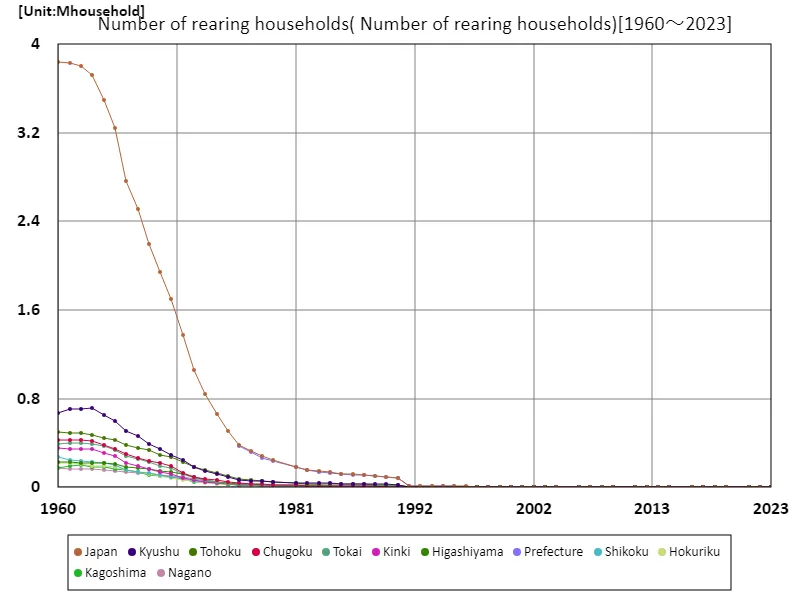

The maximum is 3.84Mhousehold[1960] of Japan, and the current value is about 45.9m%
Number of households raising laying hens (prefectures, latest year)
In 2023, livestock statistics for the number of households raising chickens in Japanese agriculture showed that Aichi Prefecture recorded the highest number of households overall, with 112. This is 100% of the peak level, indicating that poultry farming is once again attracting attention in Aichi Prefecture. In recent years, the demand for chicken has increased due to changes in food culture and growing health consciousness. As a result, local poultry farmers are actively working to increase production, and the number of households raising chickens is showing a trend toward increasing. Additionally, technological advances are making poultry farming more efficient and improving productivity. However, poultry farming also presents challenges in terms of environmental considerations and animal welfare. Going forward, there is a need to establish a sustainable poultry farming industry.
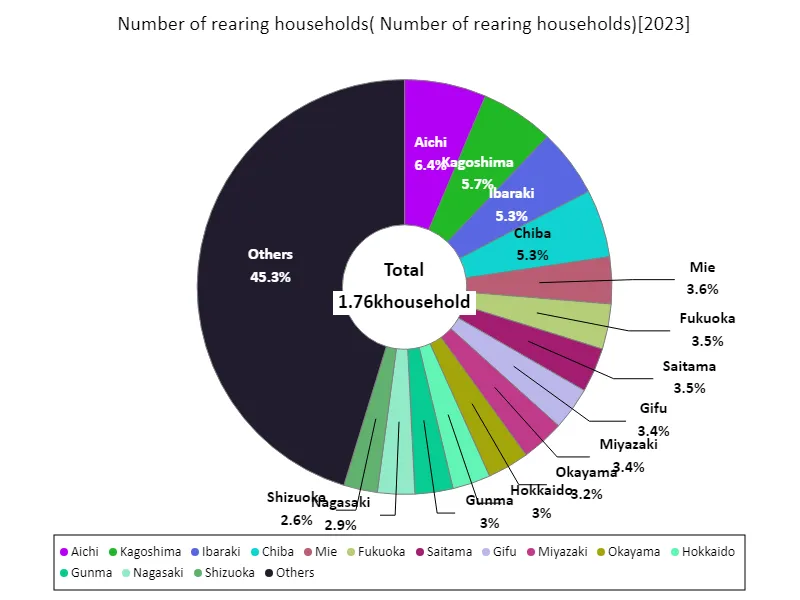

The maximum is 112household of Aichi, the average is 37.4household, and the total is 1.76khousehold
Number of households (laying hens)
The 2023 chicken egg-laying hen farming statistics for Japan is a total of 1,690 households, with an average of 35.9 households. Aichi Prefecture recorded the highest number of households with 108, establishing itself as a center for poultry farming. This reflects the different characteristics and demands of livestock farming in different regions. The number of laying hens tends to be dispersed among relatively small poultry farms, which may result in diverse management styles among farmers and an impact on local communities. In addition, because the calculation excludes poultry farmers who only raise breeding hens, it is possible that they are raising layer hens efficiently, with clear production objectives. However, the number of egg-laying hens appears to be adjusted according to a certain demand, and they also need to be flexible in responding to market fluctuations and changes in demand. Due to these characteristics, poultry farming plays an important role in the local economy and food security.
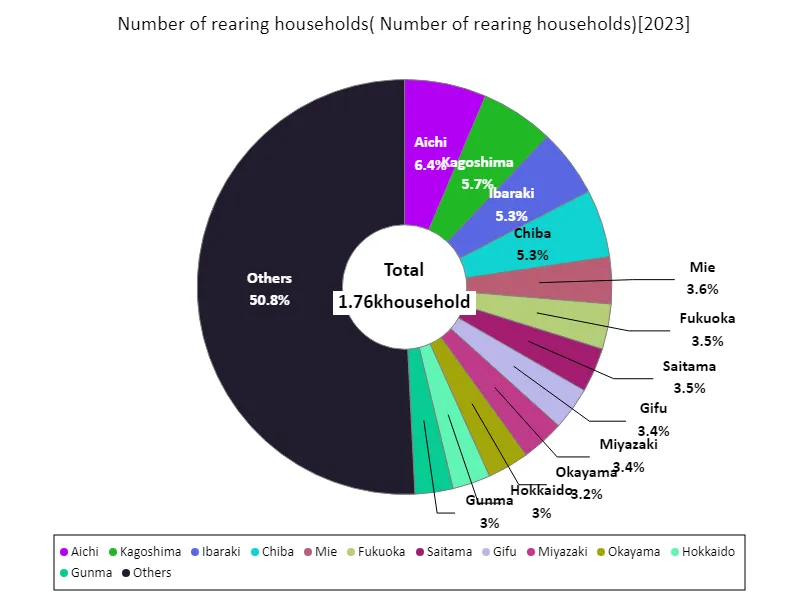

The maximum is 112household of Aichi, the average is 37.4household, and the total is 1.76khousehold
Number of households that raise breeding chickens only
The statistics for the number of adult chickens in Japanese agriculture in 2022, by farm size, ranging from 100,000 to 499,999, are noteworthy. The number of birds kept nationwide reached a peak of 60.4 million, the highest figure to date. This figure suggests that medium-sized livestock farmers are focusing on chicken rearing. The 100,000-499,999 bird scale, while relatively small compared to the large scale, has a significant market share. Farms of this size play an important role in the local economy as they have the flexibility to adjust production to meet local demand. Farms of this size also strive for both productivity and quality, including sustainable agricultural practices and adherence to hygiene standards. The efforts of these medium-scale farms are contributing to the stability of the supply of chicken meat and eggs in Japan and improving their quality. Going forward, the growth and support of medium-scale farmers will likely remain essential for the sustainability and development of agriculture in Japan.
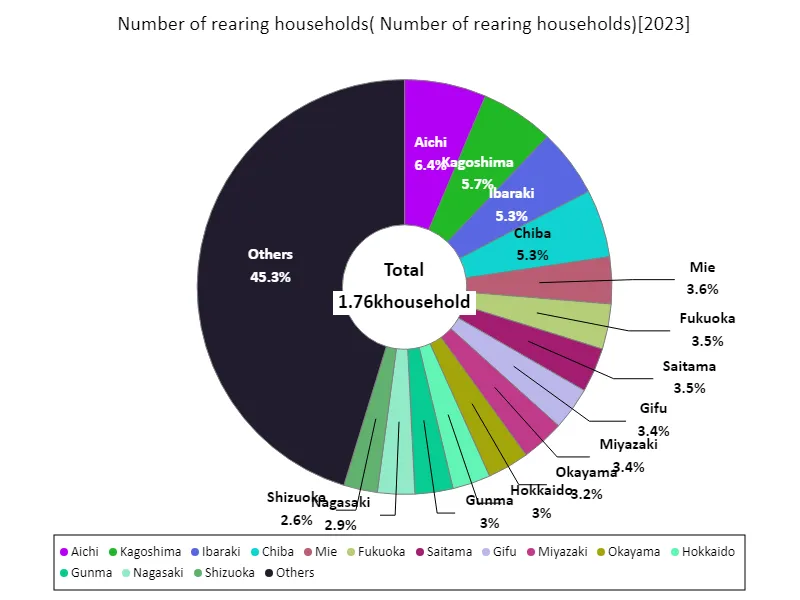

The maximum is 112household of Aichi, the average is 37.4household, and the total is 1.76khousehold
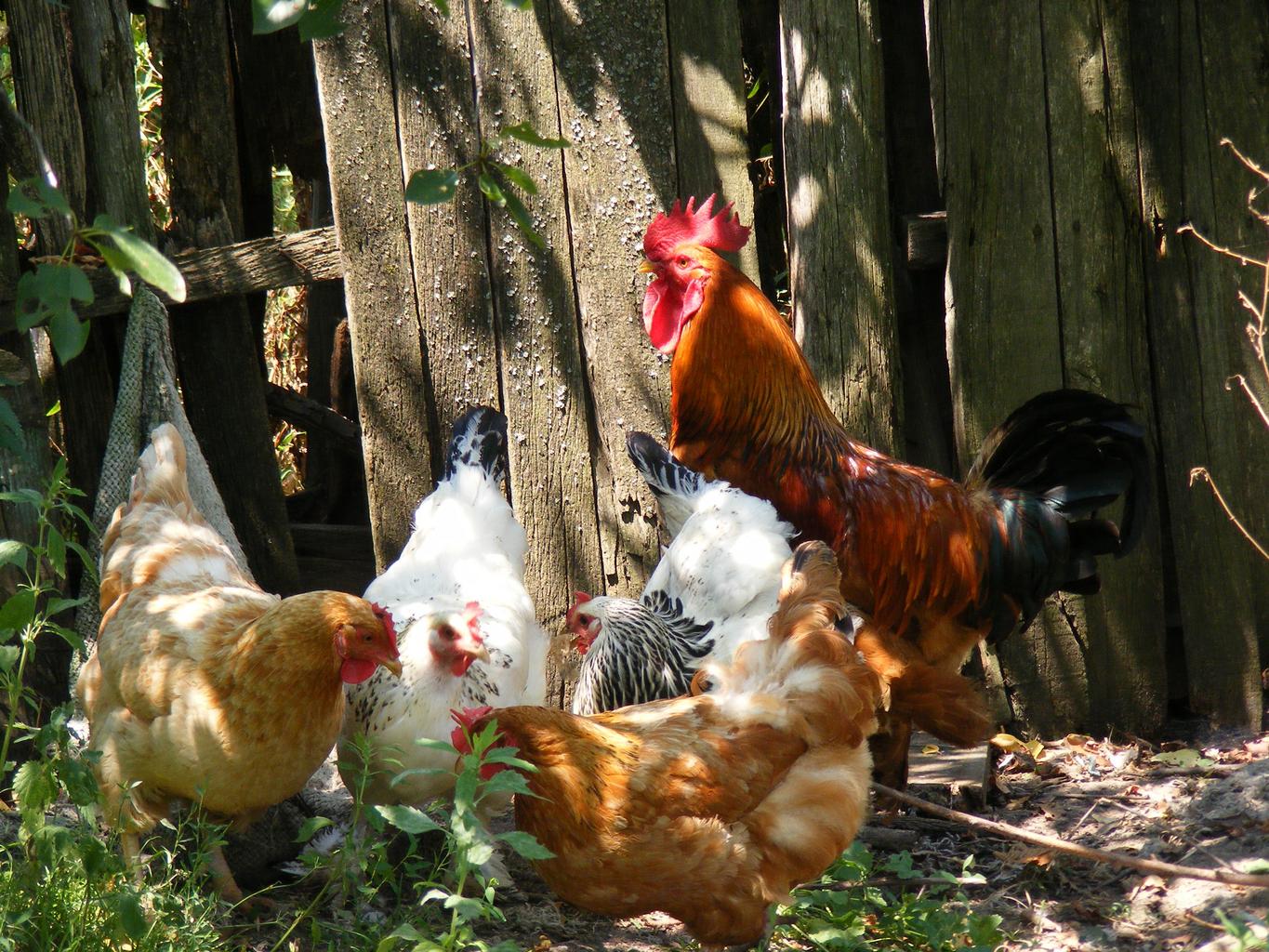


Comments